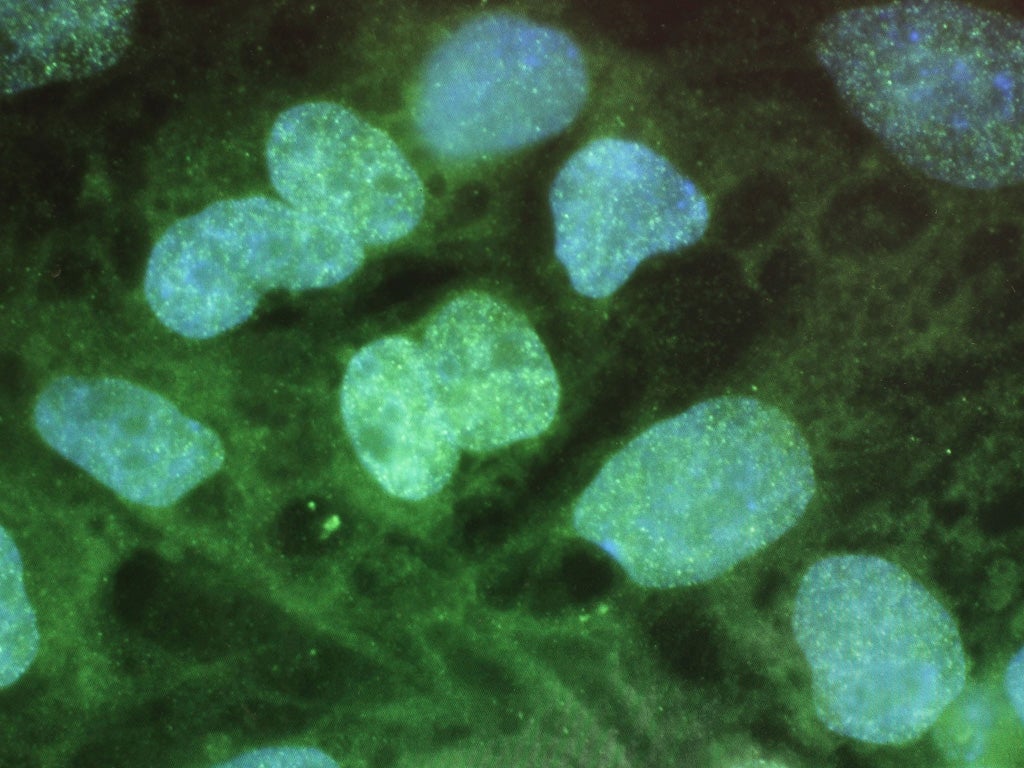Britain's Sir John Gurdon wins Nobel prize in medicine for his pioneering work in cloning and stem cells
The 79-year-old was the first person to clone an animal from a single cell

A British scientist who was told as a 15-year-old schoolboy that a career in science was “ridiculous” has won this year’s Nobel prize in medicine for his pioneering work in cloning and stem cells published in 1962.
Sir John Gurdon, 79, of Cambridge University was the first person to clone an animal from a single cell and in doing so ignited a slow fuse on the long development of stem cell technology which promises to revolutionise medicine in the 21st Century.
Despite a school report suggesting that he should avoid studying science, Sir John today said that he owes a great debt of gratitude to the UK for supporting basic scientific research that at the time had no obvious use other than the advance of knowledge.
“The work I was involved in had no obvious therapeutic benefit. It was purely of scientific interest. I hope the country will continue to support basic research even though it may have no obvious practical value,” Sir John said.
“It is particularly pleasing to see how purely basic research, originally aimed at testing the genetic identity of different cell types in the body, has turned out to have clear human health prospects,” he said.
Sir John shares the 2012 Nobel Prize in Physiology or Medicine with Shinya Yamanaka of Kyoto University who demonstrated for the first time that it was possible to clone animals from skin cells that had been genetically engineered with just four additional genes.
Professor Yamanaka, who was born in the same year that Sir John’s work was published, demonstrated in 2006 that skin cells can be transformed by the extra genes into “pluripotent” stem cells that are capable of developing into any one of the dozens of specialised cells of the body.
Cloning is seen as critical in proving that a fully-developed, specialised cell from an adult mammal contains all the necessary genes for the entire complement of specialised cells in the body. It means that a patient’s skin cell could in theory be turned into any specialised tissue for repairing the brain, eye, kidney or heart.
Scientists hope that the work will in the future lead to new personalised treatments for a range of incurable conditions where diseased organs or tissues are mended by stem cells derived from a patient’s own skin samples.
Prior to Sir John’s seminal experiments on frogs, which he started in 1958 when he was a graduate student in Oxford, biologists believed that specialised cells had lost the genes for other functions during embryonic development.
Sir John overturned the accepted dogma by publishing a scientific report in 1962 showing that it was possible to take the nucleus from the cell of a frog’s gut, implant it into an unfertilised egg cell that had had its own nucleus removed and get it to behave as if it was a normal fertilised egg to develop into complete tadpoles and frogs.
The cloned tadpoles were living proof that the specialised cells of an adult frog’s gut or skin tissue contained all the genes needed to produce a complete animal. Fifty years later, the insight means that it may now be possible to take skin cells from patients and use them to produce stem cells for repairing damaged tissues.
Sir John’s cloning work on nuclear transfer was adapted in 1996 to produce the first clone of an adult mammal in the form of Dolly the sheep. Sir Ian Wilmut of Edinburgh University, who led this work, today said that he is delighted with this year’s Nobel being shared between Sir John and Professor Yamanaka.
However, producing stem cells by nuclear transfer cloning requires a supply of unfertilised egg cells and results in the production of viable embryos, which some people consider to be ethically wrong when applied to human tissue.
Professor Yamanaka’s work circumvented these fears because no egg cells or embryos are produced in the process of making so-called induced pluripotent stem (iPS) cells, which are made by engineering the genes of skin cells without nuclear transfer.
Sir John said that he intends to spend some of his share of the 8m Swedish Crowns (£750,000) Nobel prize on a scheme to fund PhD students in their fourth year when their normal research funding usually dries up.

Join our commenting forum
Join thought-provoking conversations, follow other Independent readers and see their replies